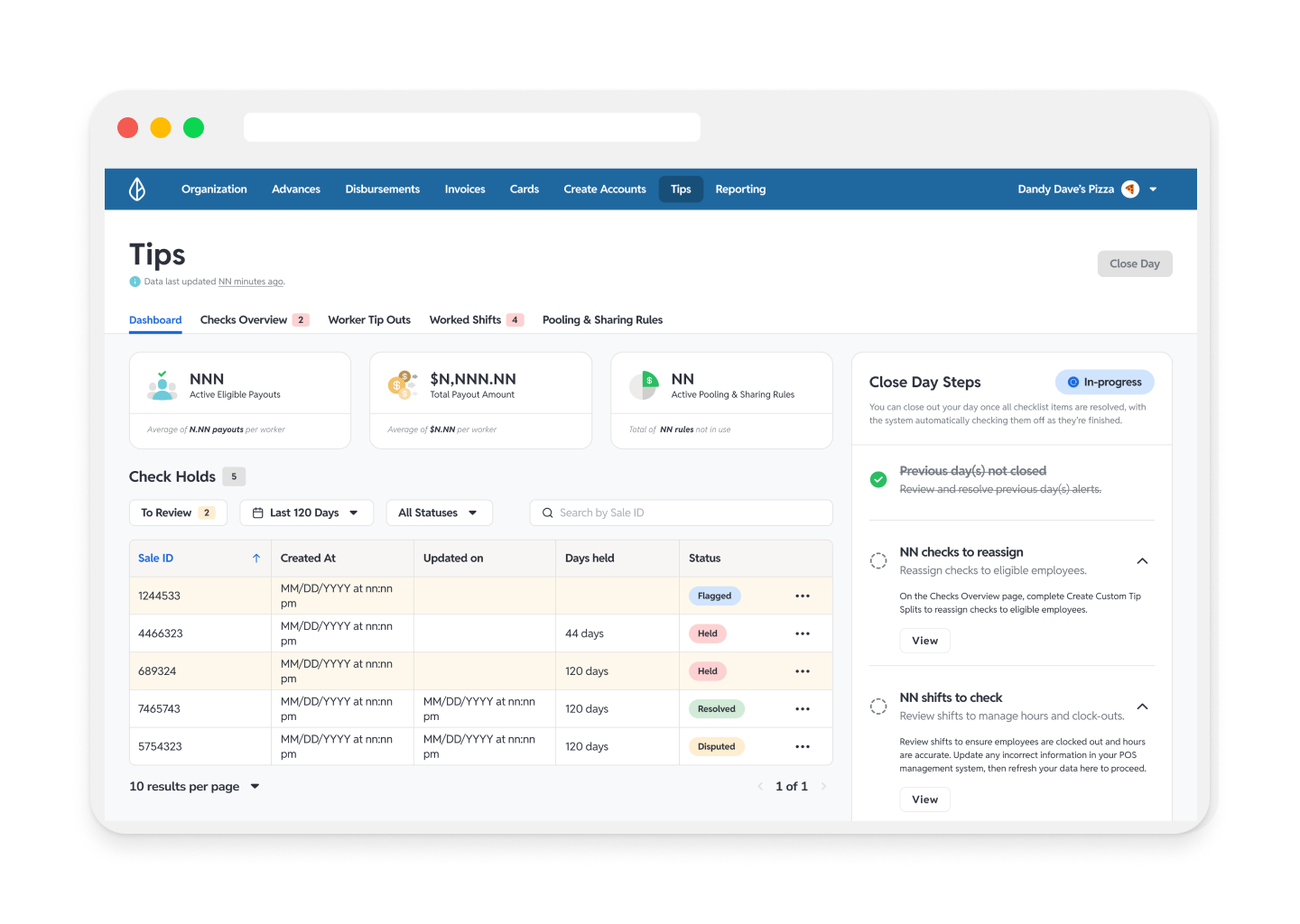
Tip Pooling
Empowering restaurant workers with same-day tip payouts through automated pooling
— Company
Branch
— Timeline
6 months
— Tools Used
Figma
— Project background
For restaurant employees, tips are a critical part of their income, but Miller’s Ale House’s existing tip distribution process was inconsistent, time-consuming, and lacked transparency. With 80 locations and approximately 200 employees per restaurant, the reliance on Aloha POS for credit card tip processing created challenges that impacted both employees and managers.
Employees struggled with:
Unreliable payouts – Cash-based distributions often resulted in missed or inaccurate payouts.
Lack of visibility – There was no clear way to see how tips were calculated or distributed.
Meanwhile, managers faced:
Increased workload – Manual reconciliation added unnecessary complexity and delayed payments.
Compliance risks – Without automated tracking, staying aligned with wage laws was challenging.
— The solution
To address these challenges, I designed an intuitive, transparent system for digital tip payouts—automating key workflows while improving visibility for both employees and managers.
Moved to digital payouts – Ensuring secure, accurate, and timely distributions.
Provided real-time tracking – Allowing employees to instantly see their tip shares.
Ensured fair distribution – Automating tip allocation based on clear, predefined rules.
Reduced administrative tasks – Streamlining reconciliation and compliance tracking.
Improved trust and satisfaction – Giving employees confidence in how their tips were managed.
How might we create a seamless and transparent tip pooling system that ensures fair, real-time payouts while reducing administrative burden for restaurant managers?
My Role & Process: Leading UX from Concept to Prototype
As the sole designer on this initiative, I led the end-to-end UX process—from early discovery through prototyping and validation. My role included:
User research: Interviewed employees and managers to map current processes and pain points
Workflow mapping: Visualized Aloha POS flows and restaurant operations to identify automation opportunities
MVP definition: Collaborated with PM + engineers to prioritize features balancing usability and feasibility
Prototyping & feedback: Designed and iterated on high-fidelity prototypes in Figma; gathered feedback from internal stakeholders and restaurant partners
Cross-functional collaboration: Worked closely with technical and operations teams to align the UX with business logic and compliance needs
Key design features:
Real-time tip dashboard: Employees can instantly view tip shares, payout details, and history
Clear distribution rules: Simplified tip formulas improved transparency and reduced disputes
Digital payout automation: Replaced manual cash handling with automated same-day payouts
Manager tools: Streamlined reconciliation and approval flows for faster closeouts
By focusing on a user-centered design approach, the new system not only improved the tip distribution process but also enhanced employee confidence and satisfaction.
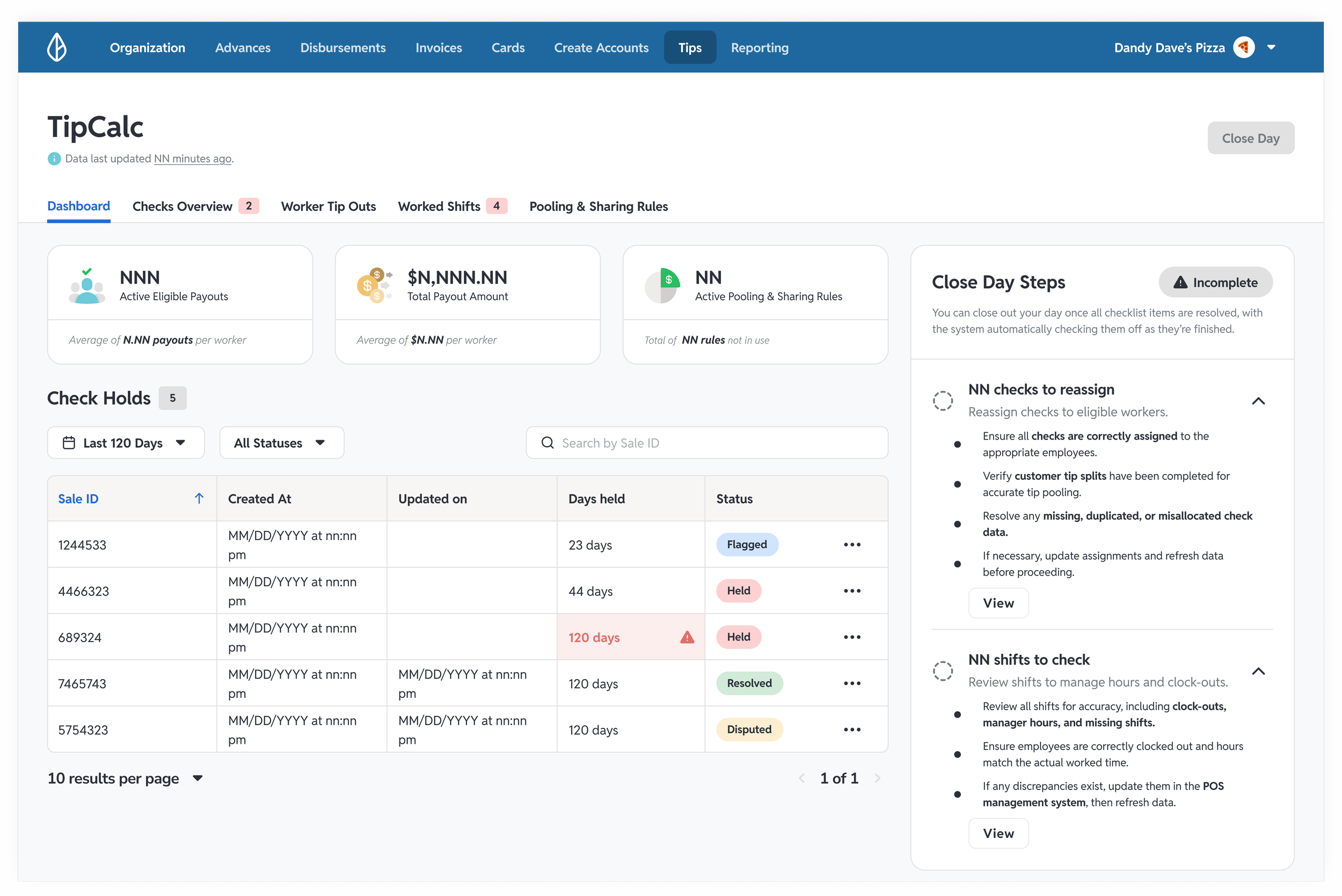
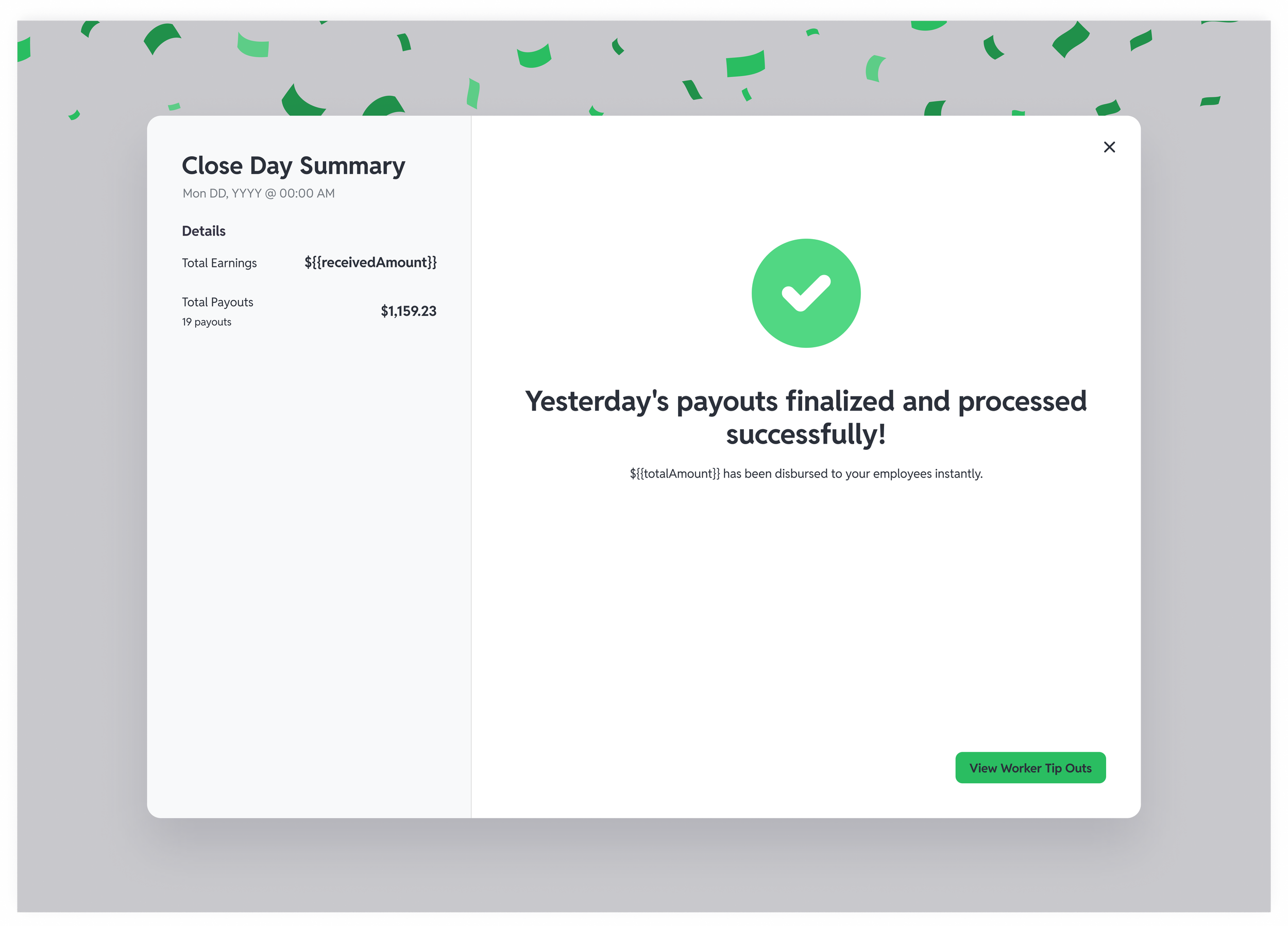
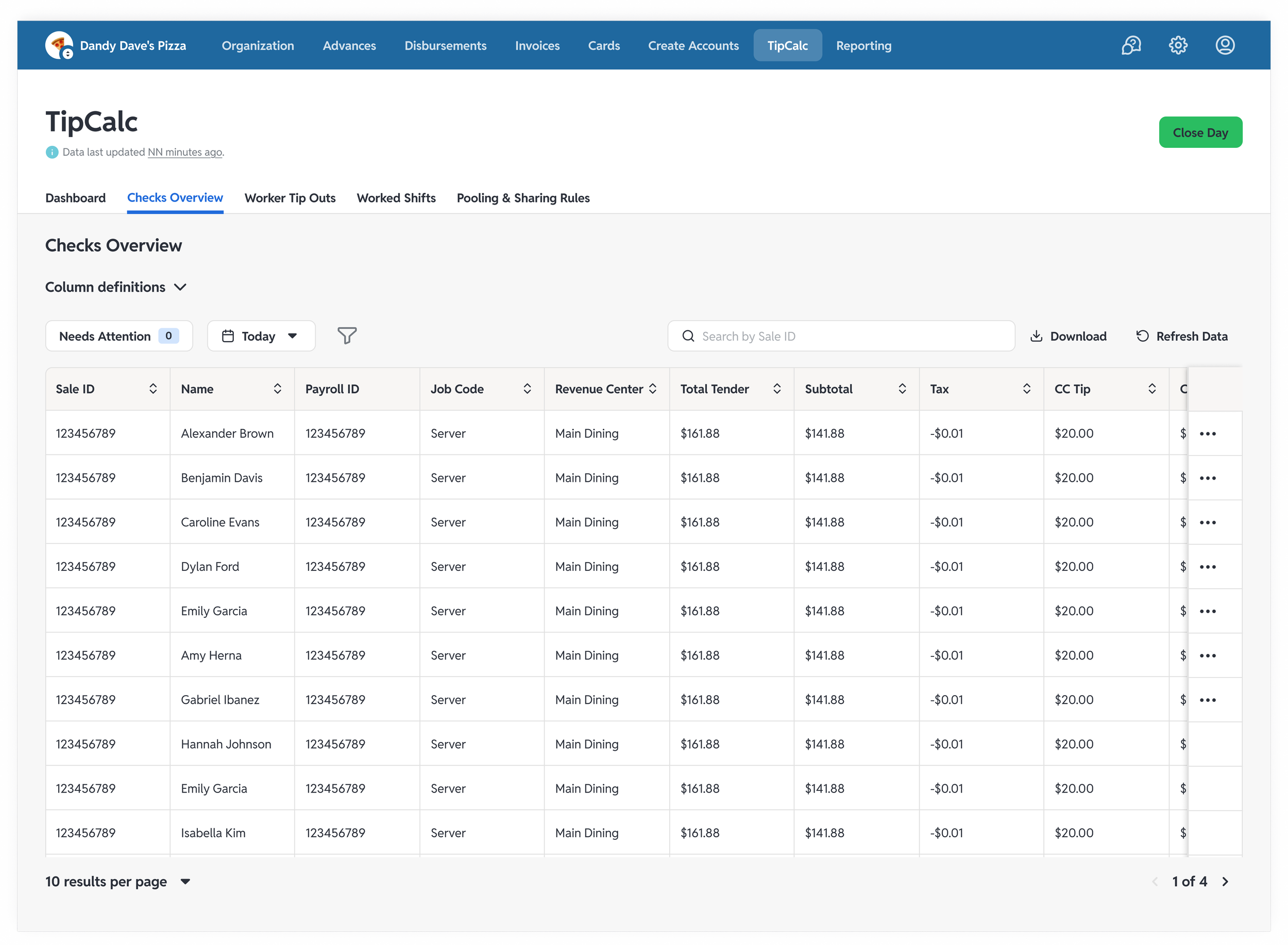
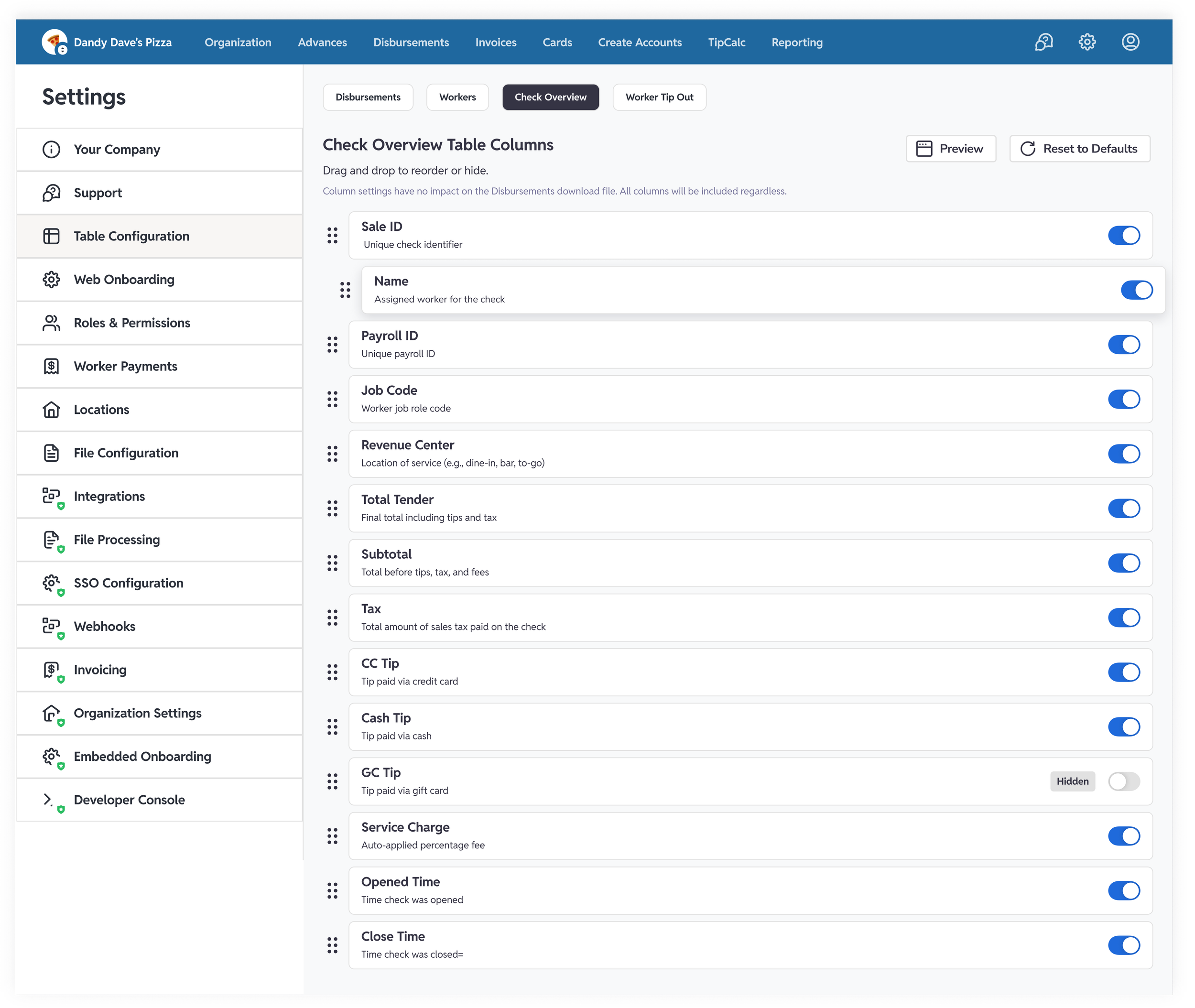

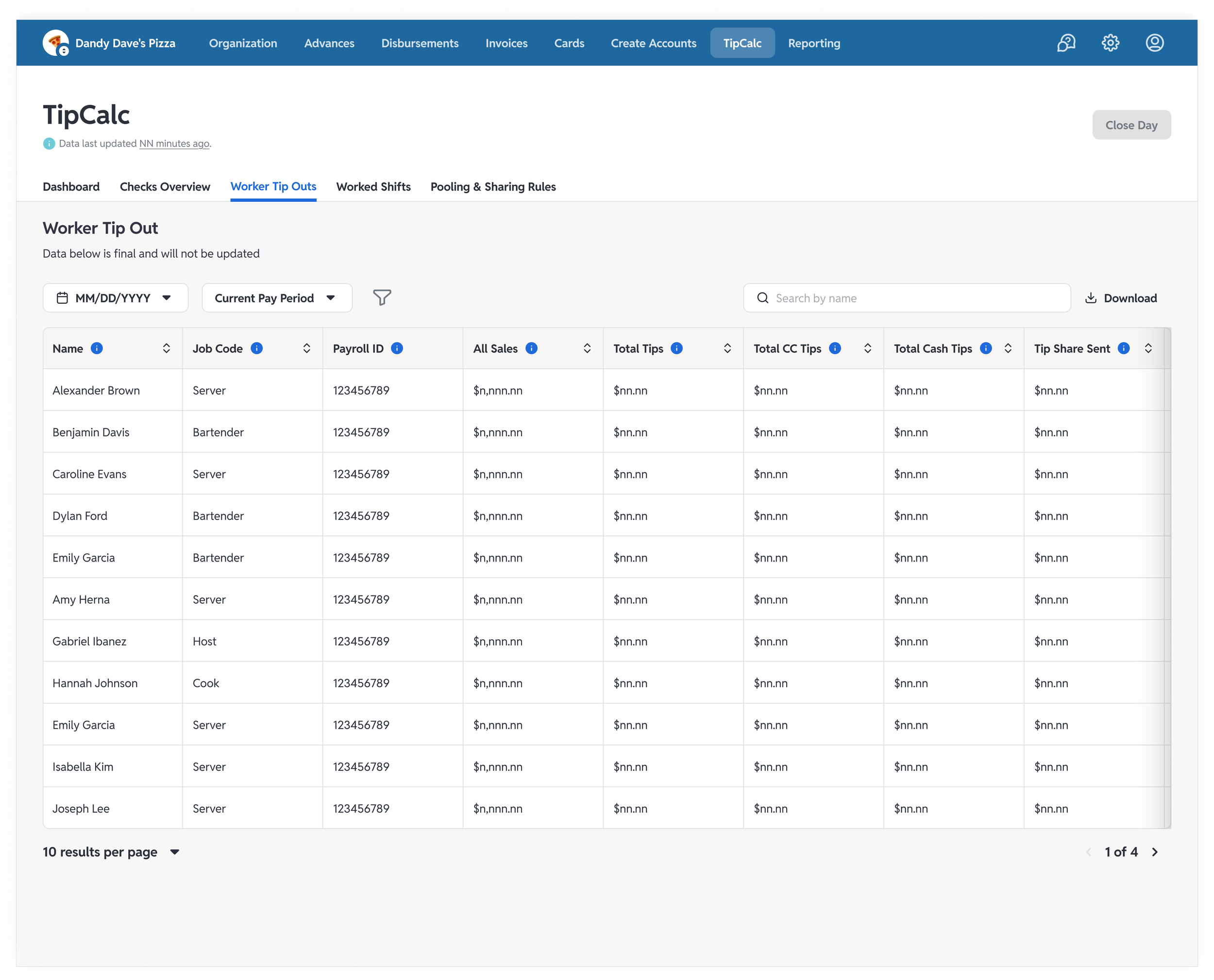



Designing for Compliance & Future Scale
Throughout the design process, we kept key considerations in mind:
Compliance Readiness: The system's design incorporates structures to support compliance with varying federal and state wage laws, ensuring accurate, exportable records.
Organizational Scaling: The architecture allows for a hierarchical model (groups, locations) and granular admin permissions, supporting bulk onboarding and location management crucial for a large enterprise like Miller's Ale House.
Expected Outcomes & Potential Impact
Although still in early stages, the system demonstrated strong potential to:
Increase transparency by providing real-time breakdowns of tips to employees
Reduce admin hours previously spent on manual tracking and spreadsheets
Improve compliance with automated records and audit-friendly logs
Support future scale with a flexible architecture for location-based management
Learnings & Reflection
This project taught me how to:
Simplify operational complexity into a usable, trustworthy product
Design for transparency, where clarity is critical to user trust and team adoption
Collaborate cross-functionally with technical and non-technical stakeholders
Most importantly, it reinforced my passion for designing tools that make finances more fair, fast, and accessible—especially for workers who rely on every dollar they earn.
